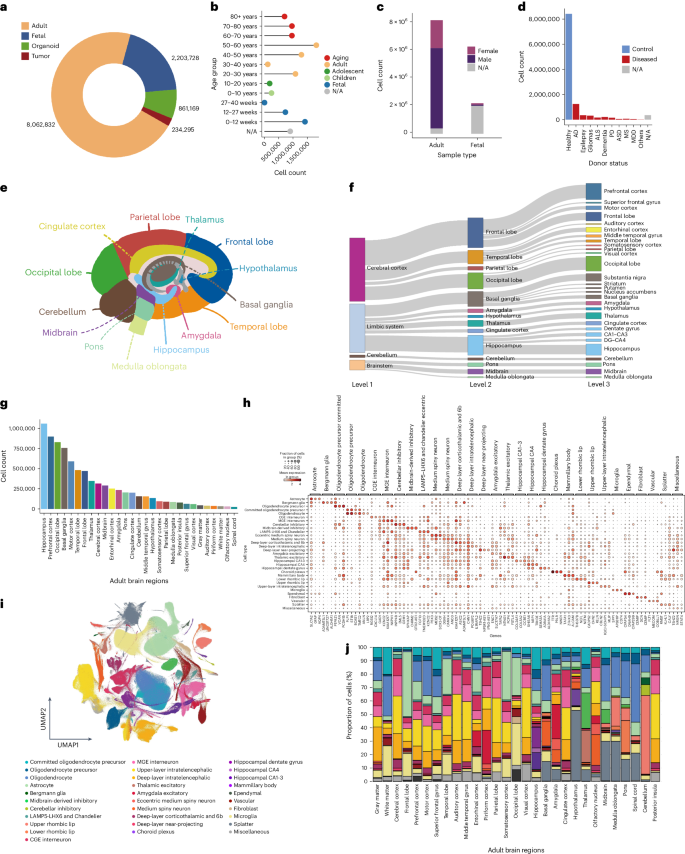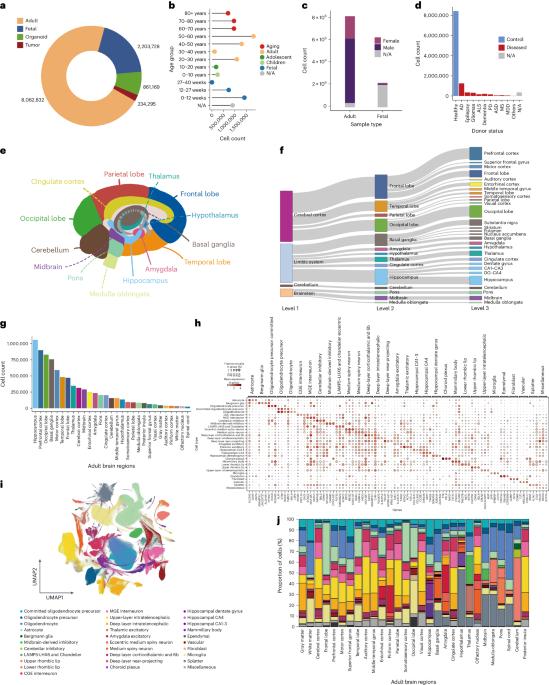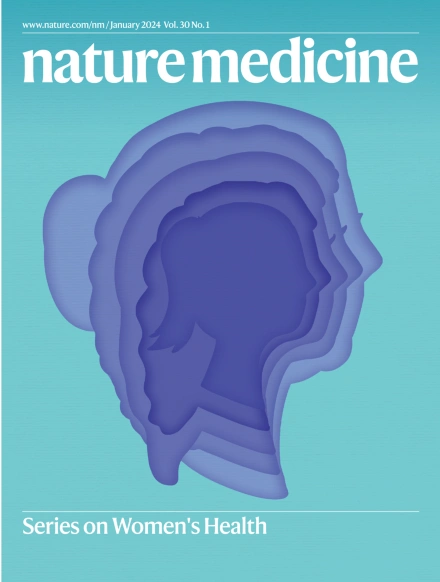整合人脑各区域单细胞转录组的脑细胞图谱
IF 50
1区 医学
Q1 BIOCHEMISTRY & MOLECULAR BIOLOGY
引用次数: 0
摘要
虽然单细胞技术极大地推动了我们对人类脑细胞类型和功能的理解,但要扩展我们对脑细胞异质性的理解,还需要包括大量供体和多个脑区的研究。整合图集级单细胞数据为揭示罕见细胞类型和跨脑区的细胞异质性提供了机会。在这里,我们展示了脑细胞图谱--一个全面的脑细胞参考图谱,它汇集了来自70项人类和103项小鼠研究的单细胞数据,这些数据来自大脑的各个主要发育阶段和脑区,涵盖了来自健康和疾病组织的超过2630万个细胞或细胞核。利用基于机器学习的算法,脑细胞图谱提供了共识细胞类型注释,并展示了人脑中潜在神经祖细胞和PCDH9高的小胶质细胞亚群的鉴定结果。我们展示了海马和前额叶皮层中 PCDH9 高的小胶质细胞的基因调控差异,并阐明了细胞-细胞通信网络。脑细胞图谱提供了一个图谱级的整合资源,用于比较人类细胞图谱中不同环境和条件下的脑细胞。本文章由计算机程序翻译,如有差异,请以英文原文为准。


A brain cell atlas integrating single-cell transcriptomes across human brain regions
While single-cell technologies have greatly advanced our comprehension of human brain cell types and functions, studies including large numbers of donors and multiple brain regions are needed to extend our understanding of brain cell heterogeneity. Integrating atlas-level single-cell data presents a chance to reveal rare cell types and cellular heterogeneity across brain regions. Here we present the Brain Cell Atlas, a comprehensive reference atlas of brain cells, by assembling single-cell data from 70 human and 103 mouse studies of the brain throughout major developmental stages across brain regions, covering over 26.3 million cells or nuclei from both healthy and diseased tissues. Using machine-learning based algorithms, the Brain Cell Atlas provides a consensus cell type annotation, and it showcases the identification of putative neural progenitor cells and a cell subpopulation of PCDH9high microglia in the human brain. We demonstrate the gene regulatory difference of PCDH9high microglia between hippocampus and prefrontal cortex and elucidate the cell–cell communication network. The Brain Cell Atlas presents an atlas-level integrative resource for comparing brain cells in different environments and conditions within the Human Cell Atlas. A single-cell transcriptomic study from the Human Cell Atlas integrating over 11 million brain cells from 70 studies uncovers differences across human brain regions and identifies rare progenitor and microglia subtypes.
求助全文
通过发布文献求助,成功后即可免费获取论文全文。
去求助
来源期刊

Nature Medicine
医学-生化与分子生物学
CiteScore
100.90
自引率
0.70%
发文量
525
审稿时长
1 months
期刊介绍:
Nature Medicine is a monthly journal publishing original peer-reviewed research in all areas of medicine. The publication focuses on originality, timeliness, interdisciplinary interest, and the impact on improving human health. In addition to research articles, Nature Medicine also publishes commissioned content such as News, Reviews, and Perspectives. This content aims to provide context for the latest advances in translational and clinical research, reaching a wide audience of M.D. and Ph.D. readers. All editorial decisions for the journal are made by a team of full-time professional editors.
Nature Medicine consider all types of clinical research, including:
-Case-reports and small case series
-Clinical trials, whether phase 1, 2, 3 or 4
-Observational studies
-Meta-analyses
-Biomarker studies
-Public and global health studies
Nature Medicine is also committed to facilitating communication between translational and clinical researchers. As such, we consider “hybrid” studies with preclinical and translational findings reported alongside data from clinical studies.
 求助内容:
求助内容: 应助结果提醒方式:
应助结果提醒方式:


